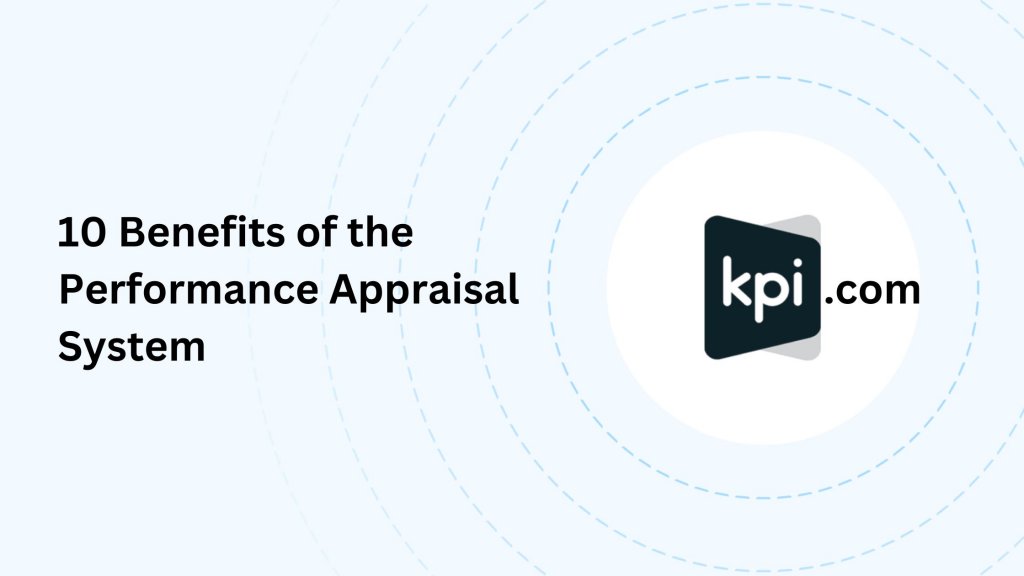
Whether you’re at the beginning of your career or well into it, it’s essential to understand what is performance appraisal. Performance appraisal is a systematic process in which an employee’s performance is evaluated in terms of quality, quantity, cost, and time. Typically, it’s a regular process that helps in understanding each employee’s ability to perform assigned tasks.
Performance appraisal, as a management tool, helps in gaining feedback, reviewing and estimating the effectiveness of performance, and discussing what needs to be done for improvements. It serves as a basis for motivating and identifying areas of development for employees.
The Definition of Performance Appraisal
The performance appraisal definition refers to the structured assessment of an employee’s job performance and overall contribution to the company. It involves the setting of objectives, evaluation of results, and providing feedback so that the employee has a clearer understanding of expectations and what can be done to improve performance.
10 Benefits of Performance Appraisal System
Performance Improvement
Performance appraisal helps in identifying the strengths and weaknesses of an employee. It can significantly impact the employee’s role within the organization. For instance, performance appraisal strengths examples such as good communication, leadership, and problem-solving can be acknowledged and encouraged.
Self-Development Opportunities
One of the critical benefits for the employee is self-development. Performance appraisal allows managers to provide positive performance appraisal comments and identify areas for improvement. Employees can discuss and create a developmental plan with the manager to improve their skills.
Motivation through Merit-based Compensation
A performance appraisal system motivates employees when it is coupled with a good merit-based compensation system. The best performers are rewarded with better pay and benefits packages, while those who lag behind may face penalties.
Facilitating Communication
Performance appraisal provides a structured process for employees to approach management for discussions, identify problems, and clarify expectations. It allows both managers and employees to set up long-term and short-term goals.
Monitoring Organizational Success
Through performance appraisal, organizations can use statistics to monitor the success of the company’s recruitment and induction practices. It helps in making informed decisions about promotions, transfers, and rewards for employees.
Identifying Underperformers
With the performance appraisal system, it is easier to identify the under-performers and decide on the further steps – whether to develop them or, in some cases, part ways.
Maintaining Records for Future Reference
Both managers and employees keep performance appraisal records, which can be reviewed in the future to assess changes in performance. This can be valuable for understanding individual progress and making future decisions.
Enhanced Employee Engagement
Performance appraisal systems can lead to higher levels of employee engagement. When employees are aware that their performance is being monitored and that they can receive feedback, they are likely to be more engaged in their work.
Better Decision-Making
Managers who conduct performance appraisals gather critical data that can inform various decisions such as promotions, layoffs, and resource allocation. This leads to better-informed decisions that align with organizational objectives.
Clarification of Expectations
Often, employees are unsure about what exactly is expected of them. Performance appraisal provides an excellent opportunity for managers to clarify these expectations. This ensures that both the manager and the employee are on the same page regarding roles and responsibilities.
Performance Appraisal Example
Let’s take an example of a performance appraisal for a Marketing Manager named John.
Date: July 5, 2023
Employee Name: John Doe
Position: Marketing Manager
Department: Marketing
Review Period: January 2023 – June 2023
Reviewer: Jane Smith, Director of Marketing
Performance Assessment
1. Leadership and Team Collaboration
Comments: John has displayed excellent leadership qualities. He is able to motivate his team and work effectively with colleagues from other departments. His performance appraisal strengths examples include effectively leading the team through a challenging product launch and actively seeking cross-departmental collaborations.
2. Communication Skills
Comments: John’s communication skills are exceptional. He communicates marketing goals and initiatives clearly to his team, and he has a knack for explaining complex ideas in an accessible way.
3. Meeting Deadlines and Budget Management
Comments: John has met all project deadlines during the review period. However, there have been instances where the budget has been exceeded. John should work on budget forecasting and allocation to improve in this area.
4. Contribution to Business Goals
Comments: John has been instrumental in driving the marketing department’s contributions to the organization’s business goals. The successful launch of our latest product was largely due to his innovative marketing strategies.
5. Skill Development and Adaptability
Comments: John is proactive in skill development. He has adapted well to the changes in the market and incorporated new digital marketing strategies into the department’s operations.
Goals for Next Period
- Develop a training plan for the marketing team to improve skills in budget management.
- Foster more cross-department collaborations to ensure a holistic approach to organizational goals.
- Monitor and control marketing expenditures to ensure alignment with allocated budgets.
Overall Performance Rating
Outstanding
This performance appraisal example illustrates how various aspects of an employee’s performance are evaluated, and specific comments are provided. It’s not just a critique but a balanced overview, highlighting strengths, areas for improvement, and setting objectives for the future.
Enhance HR Management with KPI’s Performance Dashboard
For those seeking an efficient way to monitor and analyze performance metrics, KPI’s Human Resource Management app features a performance dashboard. This dashboard provides an organized view of various performance indicators, assisting managers and HR professionals in making data-driven decisions.
Concluding Remarks
In summary, performance appraisal systems are vital for the personal and professional development of employees, as well as for the alignment of individual performance with the organizational goals. By recognizing achievements and identifying areas for growth, they promote a culture of continuous improvement and engagement within the organization.
Performance Appraisal FAQ
What is performance appraisal?
Performance appraisal is a systematic process where employees’ performance is evaluated in terms of quality, quantity, cost, and time. It usually involves setting objectives, evaluating results, and providing feedback for performance improvement.
What are some examples of performance appraisal?
Performance appraisal can take various forms including 360-degree feedback, management by objectives, performance rankings, and traditional appraisal where a manager evaluates an employee’s performance based on predefined criteria such as teamwork, communication, and adherence to deadlines.
What are common performance appraisal comments?
Common performance appraisal comments might include praise for meeting targets, suggestions for areas needing improvement, observations about an employee’s teamwork and collaboration skills, and comments on an employee’s problem-solving abilities.
What are examples of strengths in performance appraisal?
Examples of strengths in performance appraisal might include good communication skills, effective leadership, strong work ethic, creativity, problem-solving skills, and the ability to motivate others.
What is the definition of performance appraisal?
The definition of performance appraisal refers to the structured assessment of an employee’s job performance and overall contribution to the company. It includes setting objectives, evaluating results, and providing feedback to ensure that the employee understands what is expected and what can be done to improve performance.
